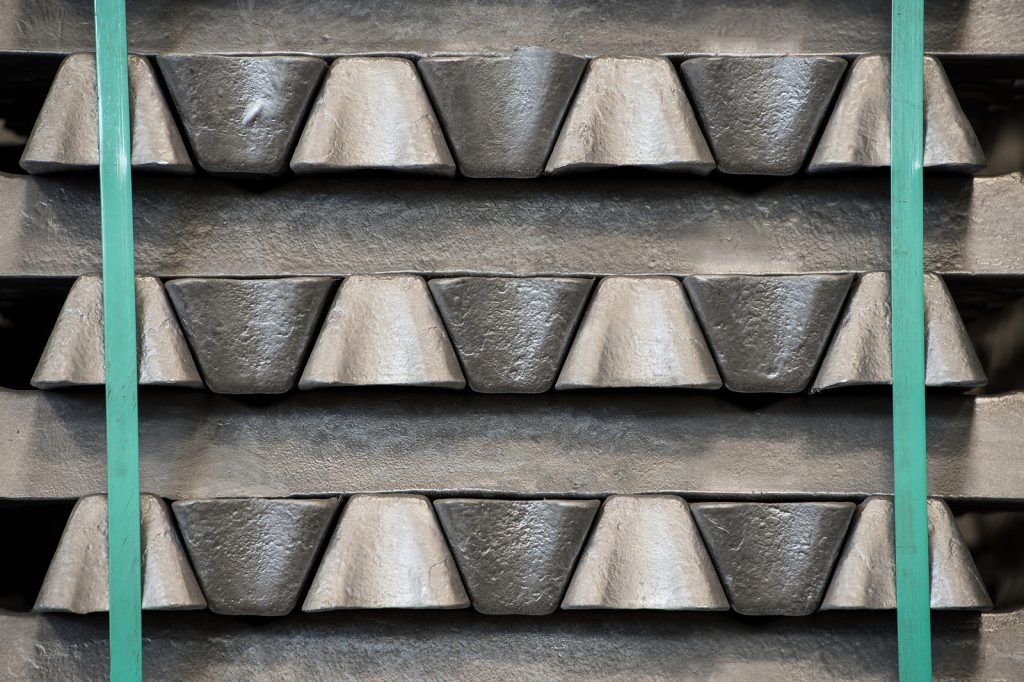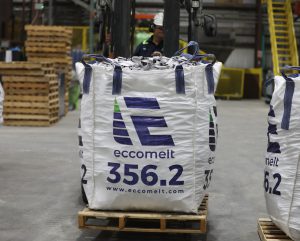Global production of aluminum hit a record low (since 2009) in 2018 with decreasing prices and increasing costs, U.S. trade tariffs imposed against China, Chinese smelter curtailments/shutdowns, and U.S. sanctions against Rusal. In 2018, global primary aluminum output totaled 64.34 million tonnes, according to the International Aluminum Institute (IAI), only 1.5 % higher than in 2017, and production basically flat lined in the second half of 2018 (most of the growth only happened in the first half). Economists had not seen such weak production increases since 2009, when the industry was battling a global recession.
Aluminum Production in China | 2017 & 2018
China, the world’s dominant producer, was least disrupted by the events of 2018. But it too took a nose dive (according to the IAI) with a measly growth of 1.6% in 2018. Their primary aluminum output suddenly rebounded in November after three months of decline, which was a big shocker for industry analysts, as they were expecting further reductions because of the planned winter production curbs. But in December they already announced more cuts mainly due to low prices and increased costs, which have already materialized.
All in all, China produced 2.82 million tonnes of the material in December, data from the National Bureau of Statistics shows. That was up 3.9% from 2.72 million tonnes in October and up 19.2% from November 2017.
Aluminum Production in the Rest of the World | 2017 & 2018
Unlike some countries in Asia (mainly India), Oceania and some Gulf Coast Countries, most parts of the world saw little or no growth in their aluminum production.
In Latin America, output has seen a gradual decline over the past decade. But in 2018, the growth rate dropped by a whopping 15.5%. This was due to a 50% reduction in product of the 450,000 tonne per year Albras smelter in Brazil to match lower supplies of alumina from Alunort (both are owned by Hydro).
In North America, capacity restarts by Alcoa, Century Aluminum and Magnitude 7 Metal were neutralized by the trimming of production at the Becancour (ABI) smelter in Canada. Due to a union lock-out that has been going on for over a year, production at the Becancour smelter fell to 136,000 tonnes in 2018 from 438,000 tonnes in 2017.
As well, there were smaller outages at the Dunkirk plant in France and Hillside in South Africa, both of which served to reduce output marginally.
What’s Next?
According to Alcoa and different analysts, with about 30-40% of all primary aluminum producers under water at current prices and costs, it is rather unlikely to expect a major change in the production growth rate during this year. However, after last year’s disruptions in the Western World, we may see at least some increase there this year. But the big question remains: What will happen in China? With 57% of the global production in 2018, China increased production capacity last year, and has a significant amount of idled capacity (some more “permitted capacity” is waiting to be activated) – but the timing will depend on market conditions, especially alumina costs, the Shanghai SHIFE price for primary aluminum, automotive and B&C demand, the trade dispute with the USA, and of course on policy. The Chinese Government also remains very focused on “illegal” over-capacity, and this is not likely to change soon. With an expected demand growth globally of somewhere in the 2-3% range, continued falling global inventory levels, and a global primary aluminum balance in the negative region, it is not easy to predict any major trend in primary aluminum pricing. Unless something major happens in the world economy, the current volatility will likely continue without any significant trend up or down.
Nonetheless, we do see an important trend on the recycling side of the aluminum industry. With the almost complete disruption of the US to China scrap stream in 2018, and the resulting turmoil in the recycling and secondary aluminum markets, volatility and a clear reorientation of aluminum recycling will continue in North America. In the US, secondary aluminum production has long taken the lead over primary production, and this trend will certainly continue, despite all efforts to restart US primary aluminum production capacity. The awareness of the value of each recycled metal and alloy is increasing, and on the pre-consumer side, more closed-loop recycling is being implemented. On the post-consumer side, Eccomelt LLC is one company that is helping foundries and die casters to gain access to this environmentally beneficial and economical metal source for their castings.
Eccomelt356.2 | Direct Substitute for A356.2 Ingot, Sow & T-bar
Alongside Alcan R&D, Eccomelt has developed a patented revolutionary process that produces a specification alloy from aluminum wheels at a lower cost than traditional methods and that meets that EPA definition of CLEAN CHARGE.
Eccomelt ships products to foundries within North America including the United States, Canada, and Mexico, and worldwide, such as France, Ireland, Italy, Serbia, and Spain. Our product is the material of choice for many consumers because it is chemically pure and environmentally-friendly. Its shredded form has achieved higher melting rates than Ingot, Sow or T-Bar. Environmental testing has also proven the process eliminates all coatings.
If you are an industry affected by the tariffs and proposed sanctions and looking for alternatives please give us a call. We can be contacted at (888) 356-9557 or visit our website and fill out our contact form





